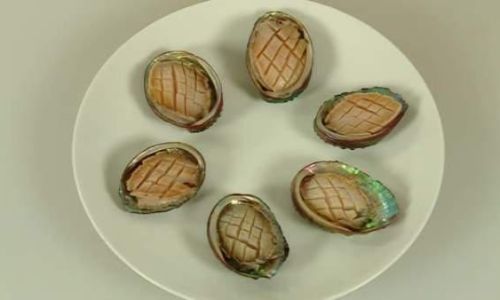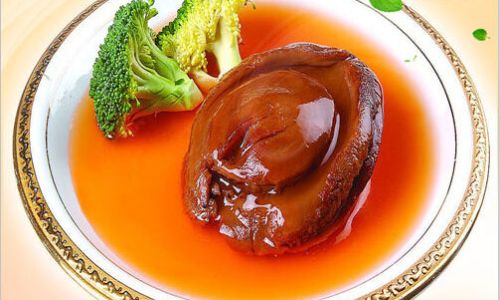Introduction
Abalone, a prized shellfish renowned for its delicate flavor and tender texture, holds a cherished place in global cuisine. From sushi bars in Japan to seafood restaurants along coastal regions, this marine mollusk is celebrated for its culinary versatility. However, handling abalone requires precision, especially when it comes to cleaning and storage. Improper techniques can compromise its taste, texture, and safety. This guide delves into the step-by-step process of cleaning abalone, followed by expert-recommended storage methods to ensure it retains its prized qualities. Whether you’re a home cook preparing a special meal or a seafood enthusiast stocking up, mastering these techniques will elevate your abalone dishes while minimizing waste.
Understanding Abalone: Anatomy and Importance of Proper Handling
Before diving into cleaning and storage, it’s essential to understand abalone’s structure. Abalone clings to rocky surfaces using a muscular foot, which is the edible part prized for its chewy yet tender consistency. Encased in a hard, iridescent shell, the creature is protected by a layer of epipodium (a frilly membrane) and viscera, including the guts and reproductive organs. Proper cleaning involves removing these non-edible parts while preserving the foot’s integrity. Neglecting this step can leave grit, bile, or unpleasant flavors in the meat.

Cleaning Abalone: A Step-by-Step Process
Cleaning abalone demands care to avoid damaging the meat or leaving behind contaminants. Follow this systematic approach for optimal results.
Gathering the Right Tools
Equip yourself with the following items before starting:
- A sturdy, dull knife (a butter knife or oyster shucker works well).
- A stiff-bristled brush (a toothbrush or vegetable brush).
- A bowl of cold water.
- A clean cutting board.
- Optional: Latex gloves to protect your hands from the shell’s sharp edges.
Detaching the Abalone from Its Shell
Abalone adheres firmly to its shell using a powerful muscle. To detach it:
- Hold the abalone firmly on a stable surface, shell-side down.
- Insert the knife blade between the meat and the shell near the toe (the narrow end).
- Gently pry the meat upward, working the knife along the shell’s edge in a sawing motion.
- Continue until the meat releases completely. Avoid using excessive force, as this can tear the meat.
Removing the Viscera and Epipodium
Once detached, you’ll notice a dark green or gray mass (the viscera) attached to the meat. This includes the guts, gonads, and liver. While some cultures consume certain organs, they can impart a bitter taste if not prepared correctly. To remove them:

- Use the knife to slice along the edge where the viscera meet the foot.
- Gently peel away the organs, discarding them.
- Trim the epipodium (the frilly membrane) using scissors or a knife, as it can be gritty.
Cleaning the Foot
The foot is the star of the abalone. To clean it:
- Rinse the meat under cold running water to remove any residual sand or debris.
- Scrub the foot’s surface with the brush to eliminate microscopic particles.
- Optional: For thinner slices, pound the meat lightly with a meat mallet. This tenderizes it but is unnecessary if cooking whole.
Final Rinse and Preparation
- Submerge the cleaned abalone in a bowl of cold water for 10–15 minutes to leach out any remaining impurities.
- Drain and pat dry with paper towels.
- The abalone is now ready for cooking or storage.
Storage Methods: Extending Abalone’s Freshness
Proper storage is critical to preserving abalone’s flavor and texture. Below are proven techniques for short-term and long-term preservation.
Refrigeration: For Immediate Use (1–2 Days)
If you plan to cook the abalone within a day, refrigeration suffices:

- Wrap the cleaned meat tightly in plastic wrap or place it in an airtight container.
- Store it on the bottom shelf of the refrigerator, where temperatures are coldest.
- Avoid storing near strong-smelling foods, as abalone can absorb odors.
Freezing: The Ideal Long-Term Solution (Up to 6 Months)
Freezing halts bacterial growth without altering texture if done correctly:
- Blanching (Optional): For added safety, blanch the abalone in boiling water for 30 seconds, then shock it in ice water.
- Packaging:
- Vacuum Sealing: Removes air, preventing freezer burn and oxidation.
- Freezer Bags: Place abalone in resealable bags, press out excess air, and seal.
- Aluminum Foil: Wrap tightly for an extra layer of protection.
- Label packages with the date and store at 0°F (-18°C) or lower.
Canning/Preserving: For Shelf-Stable Storage
Canning abalone requires pressure canning due to its low acidity:
- Clean and slice the abalone into jars, leaving 1-inch headspace.
- Add brine (1 tbsp salt per quart of water) or court-bouillon.
- Process in a pressure canner at 10 PSI for 90 minutes (adjust for altitude).
- Store jars in a cool, dark place for up to 18 months.
Drying: A Traditional Approach
Dried abalone, a delicacy in Asian cuisine, requires patience:
- Slice the meat thinly and marinate in a mixture of soy sauce, mirin, and sake.
- Arrange slices on dehydrator trays or a baking sheet.
- Dry at 145°F (63°C) for 8–10 hours until brittle.
- Store in airtight jars away from light and moisture.
Thawing Frozen Abalone: Dos and Don’ts
Improper thawing can ruin texture. Follow these guidelines:

- Refrigerator Thawing: Transfer frozen abalone to the fridge 12–24 hours before cooking.
- Cold Water Bath: Seal in a plastic bag and submerge in cold water, changing the water every 30 minutes.
- Avoid Microwaves: Rapid thawing causes uneven cooking and texture loss.
Tips for Maintaining Quality and Safety
- Smell Test: Fresh abalone should have a mild, briny scent. Discard if it smells sour or ammonia-like.
- Color Check: The foot should be ivory to pale green. Discoloration indicates spoilage.
- Avoid Cross-Contamination: Use separate utensils and cutting boards for raw abalone.
- Cook Thoroughly: Abalone must reach an internal temperature of 145°F (63°C) to kill parasites.
Common Mistakes to Avoid
- Over-Scrubbing: Aggressive brushing can damage the meat’s surface.
- Improper Packaging: Loose wraps lead to freezer burn and odor absorption.
- Refreezing: Thawed abalone should never be refrozen, as this degrades quality.
- Ignoring Expiry Dates: Frozen abalone’s quality diminishes after six months.
Conclusion
Abalone’s culinary allure lies in its unique texture and flavor, but achieving perfection requires meticulous care. By mastering the cleaning process—from detaching the meat to removing viscera—you ensure a pristine canvas for cooking. Equally vital is selecting the right storage method: freezing for longevity, refrigeration for immediacy, or drying for tradition. Remember, proper handling not only preserves taste but also guarantees safety. Whether you’re grilling, searing, or simmering abalone, these techniques will help you honor this oceanic treasure in every dish. With practice, you’ll find that respecting the details of preparation and preservation transforms even the simplest abalone recipe into a memorable feast.






0 comments